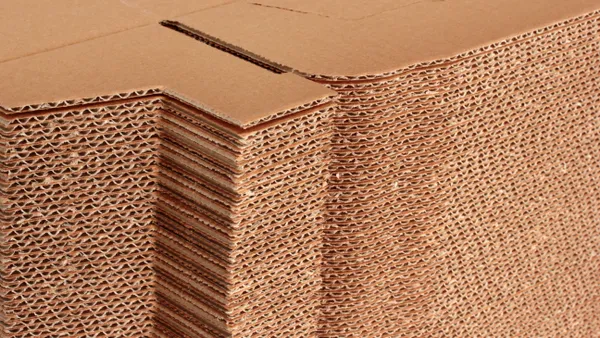Georgia-Pacific and Sonoco are among the companies that have used a free tool from the Recycled Materials Association to help reduce confusion about how easily different types of fiber packaging can be recycled in the U.S.
ReMA held a webinar Tuesday about users’ experiences with the Fiber Readiness Recycling Tool, which it launched in October. The online tool analyzes postconsumer fiber-based packaging in the U.S. market, primarily for fiber packaging manufacturers and consumer product brand owners. The tool is intended to help those groups understand their packaging’s compatibility with the current system and support design for recycling efforts.
In addition to the tool giving users real-time feedback, “we believe [it] is going to decrease the contamination at the MRF,” said Leonard Zeid, executive vice president of brokerage and marketing at Midland Davis Corp. and chair of the Fiber Readiness Recycling Tool working group. “It's going to increase the quality of the bales being sent to the consuming mills.”
Users enter data about a specific packaging type — including size, material, ISRI specification and contaminants such as inks or coatings — into the tool; pictures also can be uploaded.
The system scores the inputs and generates a color-coded determination of how well the packaging can flow through current recycling infrastructure: Green indicates it meets the criteria to flow through MRFs smoothly, yellow suggests the packaging has challenges that require modifications, and red indicates it does not meet the criteria. The user also receives an email with a summary of the analysis.
About 30 brands that represent nearly $1 trillion in revenue have used the tool since its introduction, ReMA said.
“It’s pretty intuitive,” said David Brabham, senior director of customer engagement, sustainability and stewardship for cellulose at Georgia-Pacific. “It's a pretty efficient tool for screening new packaging that packaging designers are looking to put into the marketplace early on in the process.”
ReMA plans to update the Fiber Readiness Recycling Tool over time based, in part, on user feedback. There is no set schedule, but the group said it will revisit the system as industry innovation occurs and recycling technologies change.
For instance, the tool’s initial question about packaging size uses a 3-inch by 3-inch baseline because that best reflected key MRF criteria when it was developed. But the baseline size could change in the future as MRF equipment and capabilities change.
Dan Liswood, senior project director at Closed Loop Partners and a Fiber Readiness Recycling Tool working group member, pointed to paper cups as an example of recycling changes and disparities along the value chain. More than 40 North American mills now accept paper cups despite the poly coatings and potential for contaminating the rest of the stream; however, only 11% of communities accept paper cups in their residential recycling streams.
When entered into ReMA’s digital tool, “a polycoated paper cup would receive a yellow designation because of the amount of poly coating — meaning that it will likely pass through the recycling infrastructure in some markets, but not in others,” Liswood said.
The recycling tool focuses on paper, ReMA said, because similar resources already exist for other materials, such as the plastic packaging assessment tool from the Association of Plastic Recyclers. In addition, Zeid said, brands are moving away from plastic packaging and toward fiber-based packaging and were asking for guidance on what products can be recycled and how to design for recyclability.
“We know there's no perfect tool out there, but we like the idea that this was developed with feedback from diverse stakeholders with deep industry knowledge,” Brabham said. Georgia-Pacific participated in the working group, he said, because “we believe [this] could be an important tool to help continue to advance that utilization of recyclable paper-based packaging.”















